Co-founder of Korean luxury brand We11done Jessica Jung was in Hong Kong as part of Fashion Asia. The creative director speaks to Zaneta Cheng about what it means to design luxury in Asia as an Asian and how storytelling is the key to making an impact

When I first meet Jessica Jung, it’s at the We11done showroom in the Marais during Paris Fashion Week. Most of the week has been hectic with shows and running around town but inside the ground-floor space it’s plush mauve carpeting and glazed glass surfaces where very cool people are walking by racks of Jung’s newest collection. It was only a few months earlier that social media was awash with We11done’s first runway show. Held in Seoul, it was attended by Seoul’s coolest, with the likes of rapper G-Dragon, influencer Irene Kim and model/actor Lee Soo-hyuk – a fitting guest list given its location in Seoul’s K-Pop Square in Coex, the heart of Korean pop culture and celebrity.
All this comes at a time when South Korea and its capital are capturing ever more global attention for their forward approach to culture and style. This was not always the case. Jung, creative director and co-founder of We11done, started the brand in 2014 with 10 others who together wanted to create a Korean luxury brand based in Korea that could align itself with the likes of Commes des Garçons, Issey Miyake and Yohji Yamamoto – all Japanese brands which, according to Jung, were much more popular for a very long time.
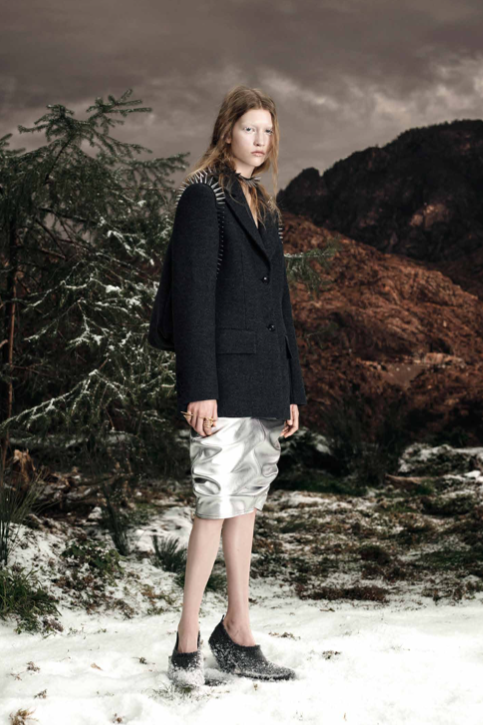
Jung, her co-founder Dami Kwon and COO Sang Mo-kim, all of whom were part of the initial 11 who formed the brand, believed the core of any compelling luxury brand was its DNA and ability to tell its story. And there was no better place to start than from their own stories. Since then the brand has carved a much cooler aesthetic within the Korean fashion landscape, drawing from a gamut of influences ranging from artists such as Anish Kapoor to ’90s and early ’00s silhouettes. The vibe is a mix of tailored pieces with modern streetwear that appeals to the aesthetic-conscious Gen Z and millennial demographic.
So, it’s about time that by our second meeting, Jung has been invited to speak on one of the forums for Fashion Asia in Hong Kong.

Can you tell us about your most recent collection?
This season was very meaningful for us. It was our first show in Korea and there was a lot of excitement, which also came with some burdens and challenges. We didn’t know exactly where to start, and then we decided to focus on Korean artists.
Our team did a lot of research, starting from Korean architecture to different places within Korea. After extensive research, we remembered that we’d always wanted to collaborate with Do Ho Suh, a Korean artist. This is when we started to analyse and read more about Do Ho Suh’s practice. Out of his many pieces, we found his art installation Home Within Home Within Home Within Home the most intriguing. We wanted to express the texture, colour and lines of the material used as well as the forms of British houses that he translated into installation. In this work, you can see houses built within a home and this is one of the key concepts we wanted to express through my garments.
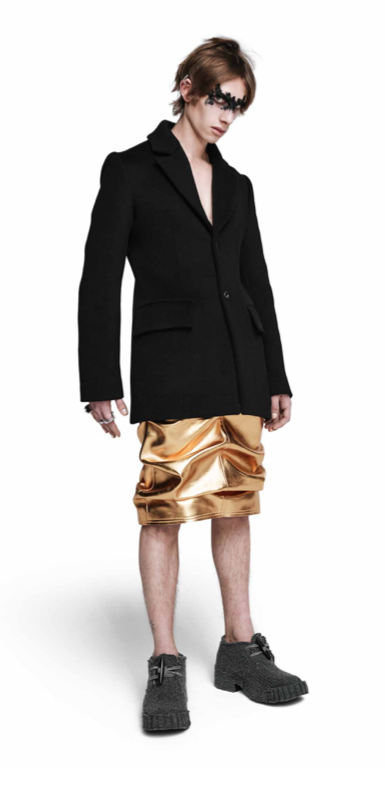
Through this, the collection focuses on the concept of home because we also wanted to commemorate our return to Korea. We wanted the garments to express our own memories of home and the small, intimate items you would find in most Korean households.
Something else I did was to intentionally place the buttons on the inside of the shirt. I did this to hopefully inspire people to take a glance and look within, where our memories from the past are usually kept hidden.
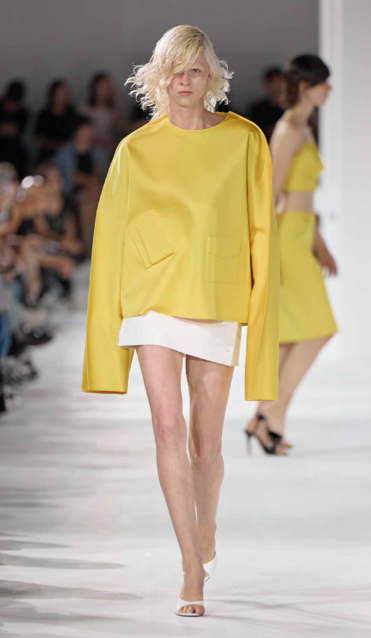
What elements of the Korean household did you incorporate into the garments?
Pockets and wallets are, to me, vessels which contain items that we want to carry with us – such as photos we want to keep. This was part of my childhood and I incorporated pockets in different pieces throughout the collection. Another simple but meaningful detail that represents home to me is the plain white skirt. If you look at it, at first sight, it’s a normal skirt but if you feel it, you’ll find that it’s hard, which is a texture typical to that which is found on wallpaper and flooring in Korean homes. I wanted people to see it and touch it and have that collective recollection of what home is for us.
My dad also wore a necktie every day so I’ve embossed this onto pieces in the collection as well. There’s also the orchid plant, which is commonly found in the Korean household. So it kind of represents what you would see when you step into a Korean house. My father wipes his orchid leaves every day.
Also see: Christmas 2023 #giveaway – A Wolford Fatal dress worth HK$1595
Tell us more about the show.
As this was our first physical show in Korea, we wanted it to embody who we are as a brand. We paid homage to Do Ho Suh through the show by incorporating his use of minimalism and colour. The runway itself was pure white, almost representing an empty art gallery. The runway acted as a blank canvas where each look acted as a memory from the past and incorporated aspects of home. From the pleats of old school uniforms and wooden printed floors, along with the subtle patterns integrated into each garment, we worked to present a very cohesive memory encapsulation of the idea of the Korean home.
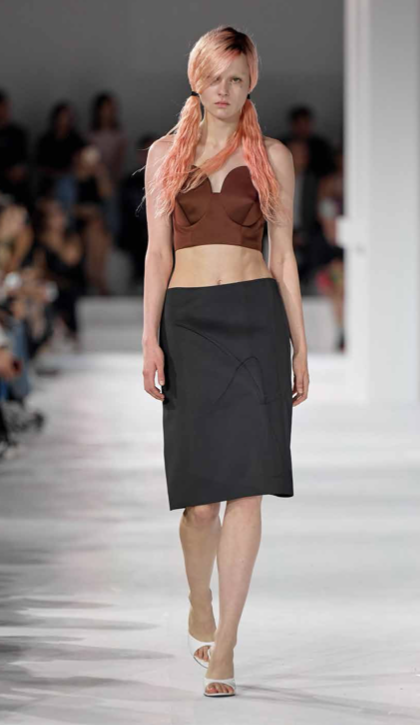
This collection was quite a collective and personal story. As creative director at We11done, is this something you strive to do at the brand?
I want to create a brand that produces clothes that I want to wear daily. This has been the core philosophy of the brand from the very beginning and it continues to this day. Every season when we begin work on a new collection, we follow the inspiration we feel at that moment. It can be influenced by personal intimate memories, or external factors such as artists, music or architecture. At times, we, the team, are the main sources of inspiration – drawing from our childhood memories. The inspiration flows naturally to us and we use this to transform our ideas and reflect it in the garments we produce.
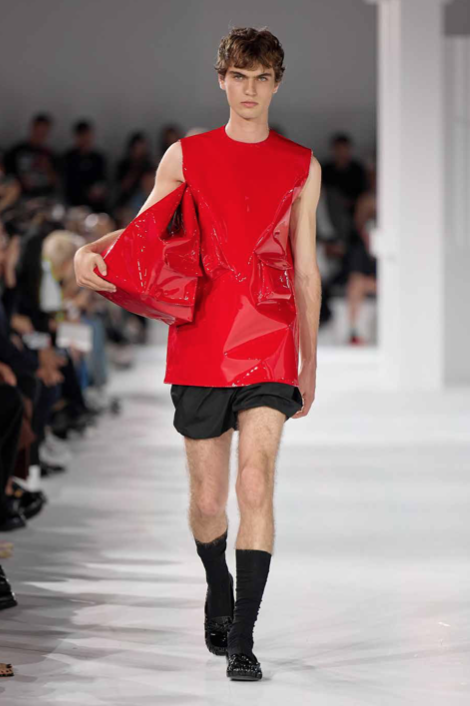
You’re in Hong Kong for Fashion Asia and attended the 10 Asian Designers to Watch event last night. As an Asian designer who has made a global impact, what are your thoughts about these new talents?
Last night made me feel that Hong Kong is very supportive of the growth of Asian designers. It’s a
very global city and there’s a chance to meet a very diverse group of people from across the fashion industry. It’s a great opportunity for designers.
When I saw the pieces yesterday, I saw a lot of Westernised and globalised creative interpretations. For example, even though I didn’t go to Central Saint Martins, it’s a place I know that’s very famous for its creative expression, which is something I’ve seen from my own team members who have graduated from that school. They all seem to have a strong desire to express something through combining the culture of the globalised West with the cultures and inspirations of Asia. I’m sure if a brand with that perspective can refine their creative proposition and express it through good storytelling, they’d easily be the next breakout star in Asia.























































